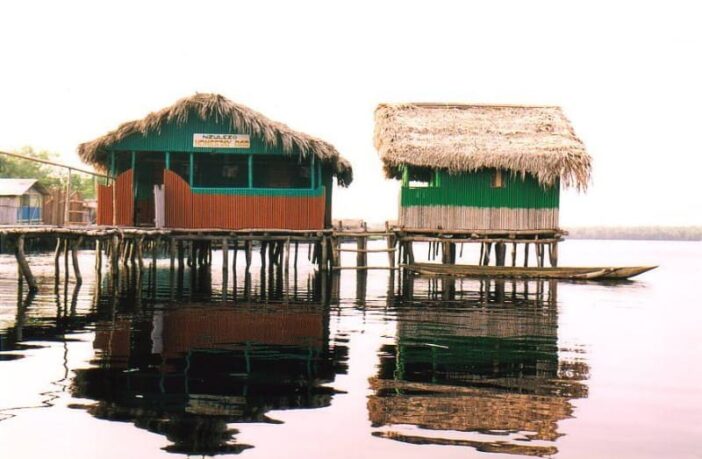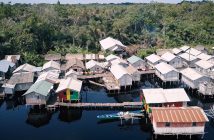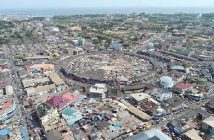From historical forts, to numerous mines and villages to charming beaches and contemporary resorts, the Western Region presents a striking contrast between ancient and modern Ghana.
The Western Region with its rich heritage, as shown by the number of castles and European trading forts is home to a remarkable cluster of colonial forts including Fort Fredericksburg at Princes Town and Fort Antonio at Axim. These castles and forts, a magnet for visitors, reflecting the diversity of building styles employed by colonial traders. Of particular interest are Fort Apollonia at Beyin and Fort Metal Cross at Dixcove. Many of these historical buildings overlook some of the best beaches in Ghana which is just the right spot to relax after a tour.
The Western Region has a long coast stretching from Ghana’s border with the Ivory Coast to the Western Region’s boundary with the Central Region. A visit to Ghana’s southernmost location, Cape Three Points, where crude oil was discovered in 2007, is strongly advised. Here, tourists can climb the 84-year-old light-house for a superb view of Ghana’s only coastal rainforest reserve and rolling hills.
Also on the coast is the region’s capital, Sekondi-Takoradi. Comprising the twin cities of Sekondi and Takoradi, the capital has a population of 450,000. Visitors will find plenty of elegant beaches and interesting resorts including Fanta’s Folly, The Hideout, Green Turtle Lodge, Princess Town Beach, Sports Club Beach and Busua Beach.
Sekondi, the older and large of the twin cities, was the site of the 17th century Dutch Fort Orange and English Fort Sekondi. A railway was constructed in 1903 to carry minerals and timber. Takoradi, the country’s second-largest industrial area, is also now a centre for the offshore oil industry. The so-called Oil City has seen a dramatic increase in investment and wealth as a result of the latest find. Large numbers of international companies and hotels have sprung up in the area.
Takoradi is the location of Ghana’s first Deepwater seaport, built in 1928 and the areas are home to timber, energy and technology industries. The city has attracted many patrons over the years, particularly miners, because of its proximity to the mining towns of the western region.
Near the coast at the far western side of Ghana, near the border with Cote d’Ivoire, is a village that is unique in all of Ghana. Nzulezu is a village that has been built on stilts above a lagoon, founded over 500 years ago, overlooks the jungle-bound Lake Tadane and rests entirely on stilts and platforms. The name of the village translates from the Nzema language as ‘Surface Water’, which describes the way it harmonises with the water-dominated natural landscape. According to the local legend, the community-based wetland reserve was built by a group from Oualata, a city of the ancient Ghana Empire, after a snail led them to that area.
Nzulezu is one of the few ancient settlements on stilts left in the world and in 2000 it was declared a World Heritage Site by Unesco for its importance in anthropology. Today it is a major tourism centre with a dazzling array of rare birds. Visitors can hire a dugout canoe or even stay overnight in a guest house on the water (except on Thursdays, which are sacred days).
It is essentially one long pier, called Main Street by the locals, with buildings constructed on both sides. One side of the ‘street’ are living quarters while the other side of the street has businesess, the school, a community center and other commercial ventures. A ‘must see’ for visitors to the Western Region is the ancient stilted village of Nzulezu.
The legend of this village is that the protecting spirit of the village, a snail, traveled to lead people to this place to establish a home.
Today the village thrives on fishing, farming on nearby land, and tourism.
The Nzulezu stilt village is not connected to electricity, but there are a significant number of television poles attached to almost every home in the village. These are powered by car batteries. For source of light in the night villages use lantern, flash light or rechargeable lamps to move about.
One of the highlights of a visit to Nzulezu is certainly the journey to get there. Nzulezu is one part of the Amasuri Wetland, a ramsar site and the largest inland swamp forest in Ghana. After driving as far as the unpaved road will allow for the current conditions, there will be a short walk to get to your canoe. A canoe ride of 45 minutes to an hour passes narrow, lush channels, open plains, and finally the wide expanse of Amansuri Lake. The ride is safe and lifejackets are available.
When visiting Nzulezu, one should take time to visit a few other local attractions.
Ankasa Nature Reserve is a rarely visited park. This is a true rainforest environment with the highest rainfall of anywhere in Ghana.
Fort Apollonia is the westernmost Colonial-era fort in Ghana. This is an easy visit because arrangements for Nzulezu are made in Beyin, the beach village where Fort Apollonia is located.
REFERENCE
1. Available online at, https://www.easytrackghana.com/tour-ghana-nzulezu.php.





